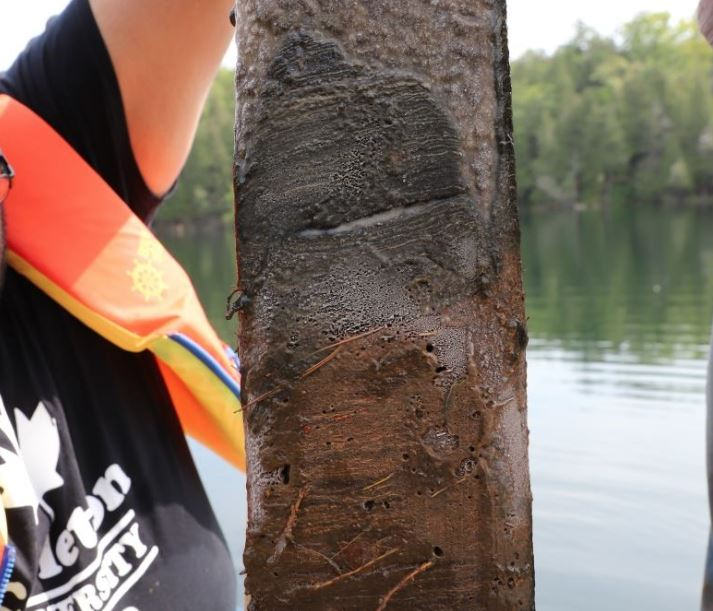The Bottom of Crawford Lake Reveals the Beginning of The Current Geological Era Anthropocene

Human activity and technology advancement has changed the way Earth looks, leading it into a new geological era called the Anthropocene. But they haven’t yet found out when it began.
Three universities of Ontario have teamed up and sent their researchers to find answers at the bottom on the Crawford Lake. An earth sciences professor at Brock University and the team leader Francine McCarthy, has been studying the lake for more than three decades:
“We feel strongly that Crawford Lake has all the right stuff.”
What kind of “stuff” should the lake have to reveal the beginning of the Anthropocene?
To begin with, Crawford Lake is perfect for sediment samples. It is 22-meters deep and has no oxygen at the bottom, making the material at the bottom of the lake set in layers. Each year, the lake captures different materials – rock, dead critters and so on, decomposing and leaving a distinct line, similar to the rings of a tree.
The past week, McCarthy’s team took a sample of sediment to see if they could find they year 1950, which the International Commission on Stratigraphy proposed as the beginning date of the Anthropocene.
Martin Head who is a professor at Brock and chair of the international commission, explains that “the Anthropocene is a time when human activities have overwhelmed the planetary system.”
Rising sea levels and temperatures, extinction of plants and animals pushed the planet into a different era. The last epoch was Holocene, after the last ice age which was 12,000 years ago ended. The commission wants to make scientists agree that the Holocene epoch ended abruptly, even though a new epoch takes million years to develop.
To prove that the start of Anthropocene was somewhere around 1950, the commission has to find changes in the sediment and see spikes in plutonium and microplastics.
Looking at the sediment samples from Crawford Lake, the team hopes that counting back the hundreds of years in the layers of sediments would tell them when drastic changes started to take place.
Martin Head concludes, “the Anthropocene hasn’t yet been defined. This is our job,” adding that it could take years until they finish their task.
0 comments